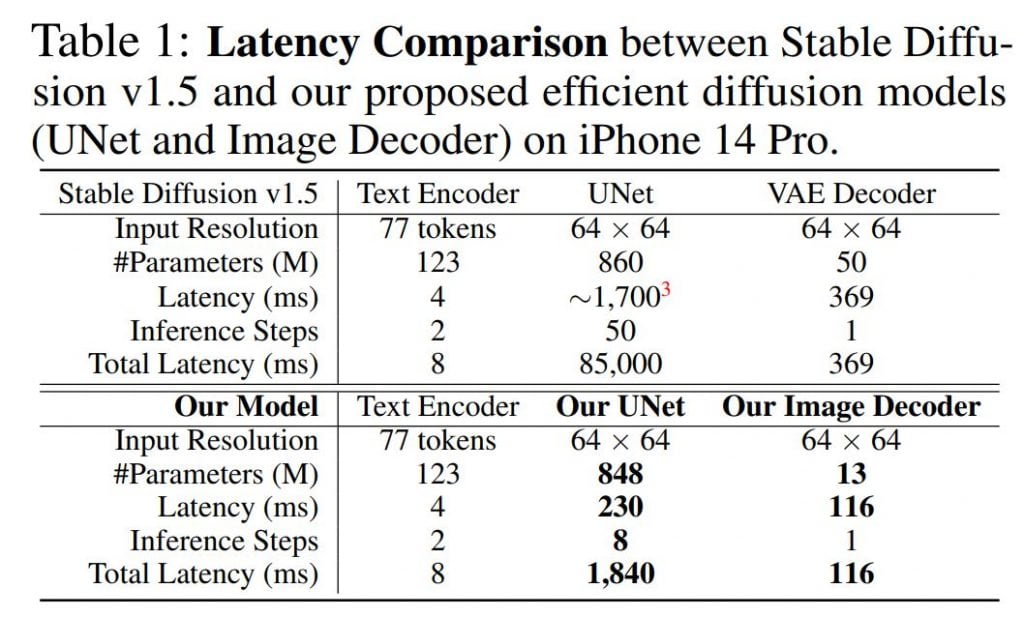SnapFusion: Fast Text-to-Image Model for Mobile Devices within 1.9 Seconds


In Brief
SnapFusion changes content creation by running text-to-image diffusion models directly on mobile devices, reducing costs and addressing privacy concerns.
SnapFusion is a text-to-image AI model that enables users to generate stunning images from natural language descriptions, all within a mere two seconds on their mobile devices. Gone are the days of relying on high-end GPUs or cloud-based services to run these complex models. SnapFusion democratizes content creation by putting the power of text-to-image diffusion in the hands of users.

Creating realistic images from text descriptions has always been a challenging task. Previous models required large network architectures and multiple denoising iterations, making them computationally expensive and slow. Furthermore, running these models often involved sending user data to third-party services, raising privacy concerns.
To address these challenges, the creators of SnapFusion developed an efficient network architecture and improved the step distillation process. By identifying redundancies in the original model, they introduced an efficient UNet and reduced the computation of the image decoder through data distillation. Additionally, they enhanced the step distillation by exploring training strategies and introducing regularization techniques.

Extensive experiments on the MS-COCO dataset demonstrated the superiority of SnapFusion. With just eight denoising steps, SnapFusion achieved better FID and CLIP scores compared to the previous state-of-the-art model, Stable Diffusion v1.5, which required 50 steps. This remarkable improvement in efficiency and performance opens up new possibilities for content creation.
SnapFusion’s impact goes beyond its technical achievements. By running text-to-image diffusion models directly on mobile devices, it eliminates the need for expensive GPUs and cloud-based services. This not only reduces costs but also addresses privacy concerns associated with sending user data to third parties. Users can now unleash their creativity and generate high-quality images on the go.
The model’s parameter size can be further reduced to make it compatible with various edge devices. Additionally, optimizing the model for different mobile devices to achieve fast inference speeds is an ongoing research topic.
It is essential to use SnapFusion and similar technologies responsibly to prevent malicious applications. Measures can be taken, such as automatic detection systems that identify and flag image content that violates regulations. By striking a balance between innovation and ethical considerations, SnapFusion can change content creation while ensuring a safe and responsible user experience.
Read more about AI:
Disclaimer
In line with the Trust Project guidelines, please note that the information provided on this page is not intended to be and should not be interpreted as legal, tax, investment, financial, or any other form of advice. It is important to only invest what you can afford to lose and to seek independent financial advice if you have any doubts. For further information, we suggest referring to the terms and conditions as well as the help and support pages provided by the issuer or advertiser. MetaversePost is committed to accurate, unbiased reporting, but market conditions are subject to change without notice.
About The Author
Damir is the team leader, product manager, and editor at Metaverse Post, covering topics such as AI/ML, AGI, LLMs, Metaverse, and Web3-related fields. His articles attract a massive audience of over a million users every month. He appears to be an expert with 10 years of experience in SEO and digital marketing. Damir has been mentioned in Mashable, Wired, Cointelegraph, The New Yorker, Inside.com, Entrepreneur, BeInCrypto, and other publications. He travels between the UAE, Turkey, Russia, and the CIS as a digital nomad. Damir earned a bachelor's degree in physics, which he believes has given him the critical thinking skills needed to be successful in the ever-changing landscape of the internet.
More articles

Damir is the team leader, product manager, and editor at Metaverse Post, covering topics such as AI/ML, AGI, LLMs, Metaverse, and Web3-related fields. His articles attract a massive audience of over a million users every month. He appears to be an expert with 10 years of experience in SEO and digital marketing. Damir has been mentioned in Mashable, Wired, Cointelegraph, The New Yorker, Inside.com, Entrepreneur, BeInCrypto, and other publications. He travels between the UAE, Turkey, Russia, and the CIS as a digital nomad. Damir earned a bachelor's degree in physics, which he believes has given him the critical thinking skills needed to be successful in the ever-changing landscape of the internet.






















































